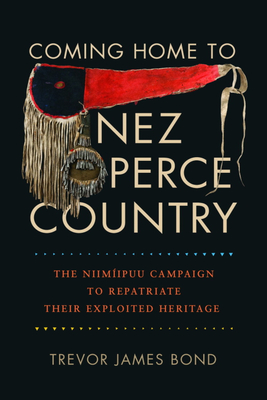
Bond, Trevor J.
Donated to Oberlin College in 1893 and transferred to the Ohio Historical Society (OHS) in 1942, the Spalding-Allen Collection languished in storage until Nez Perce National Historic Park curators rediscovered it in 1976. The OHS loaned most of the artifacts to the National Park Service, where they received conservation treatment and were displayed in climate-controlled cases. Josiah Pinkham, Nez Perce Cultural Specialist, notes that they embody "the earliest and greatest centralization of ethnographic objects for the Nez Perce people. You don't have a collection of this size, this age, anywhere else in the world."
Twelve years later, the OHS abruptly recalled the collection. Eventually, under public pressure, they agreed to sell the articles to the Nez Perce at their full appraised value of $608,100, allowing just six months for payment. The tribe mounted a brilliant grassroots fundraising campaign, as well as a sponsorship drive for specific pieces. Schoolchildren, National Public Radio, artists, and musicians contributed. Major donors came forward, and one day before the deadline, the Nez Perce Tribe met their goal.
The author draws on interviews with Nez Perce experts and extensive archival research to tell the Spalding-Allen Collection story. He also examines the ethics of acquiring, bartering, owning, and selling Native cultural history, as Native American, First Nation, and Indigenous communities continue their efforts to restore their exploited cultural heritage from collectors and museums--pieces that are living, breathing, intimately connected to their home region, and inspirational for sustaining cultural traditions.







